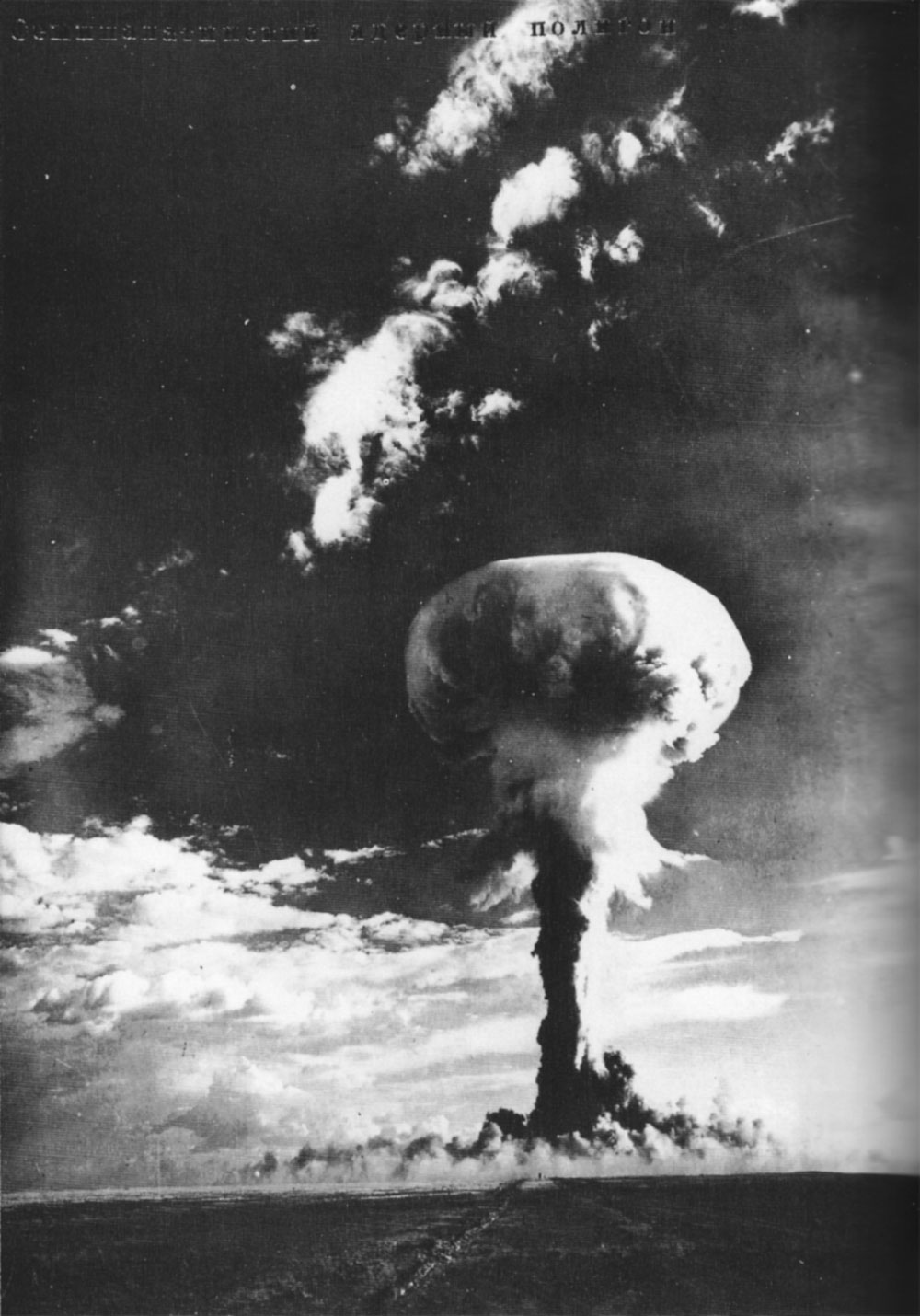The Soviets' "Joe-4" Bomb Makes its Mark
Not to be outdone, the Soviet Union exploded its first thermonuclear device, Sakharov's model of the sloika hydrogen bomb, on August 12, 1953 at the Kazakh testing grounds. The West labeled the device "Joe-4" because it was the fourth Soviet nuclear explosion to date. It was a true thermonuclear bomb that exploded on a tower but was capable of being carried by plane.

Reports of the sloika bomb's yield range from 200 to 400 kilotons, about a fifth of which was from fusion, and Los Alamos scientists who studied the "Joe-4" debris discovered that it was a single-stage bomb. Some layers contained lithium-6 deuteride and lithium tritide to generate extra neutrons during explosion, while other layers contained uranium-238. Rather than radiation, compression was achieved by using high explosives. The process of using lithium-6 and airdropping a thermonuclear bomb preceded that of the Americans, a fact which encouraged the Soviets and gave them confidence that their future efforts in developing the hydrogen bomb would yield even more awe-inspiring results.
Among the Soviet physicists who executed the bomb's mathematical calculations was Lev Landau, who calculated the bomb's dynamics so well that he was able to predict the yield with an accuracy that was then beyond the U.S.'s abilities. In 1938, Landau had spent a year in Soviet prison allegedly for leading a counter-revolutionary organization. Although he didn't want to help develop hydrogen bombs, he was haunted by the threat of prison or worse. When Stalin died in 1953, Landau quit the Soviet nuclear program.
"Joe-4" created concerns within the U.S. government and military because, unlike "Mike," the Soviet device was a deliverable weapon, which the U.S. did not yet have. This first device, though, was arguably not a "true" hydrogen bomb, and could only reach explosive yields in the hundreds of kilotons (never reaching the megaton range of a "staged" weapon). Still, it was a powerful propaganda tool for the Soviet Union, and the technical differences were fairly oblique to the American public and politicians. Following the "Mike" blast by less than a year, "Joe-4" seemed to validate claims that the bombs were inevitable and vindicate those who had supported the development of the fusion program.